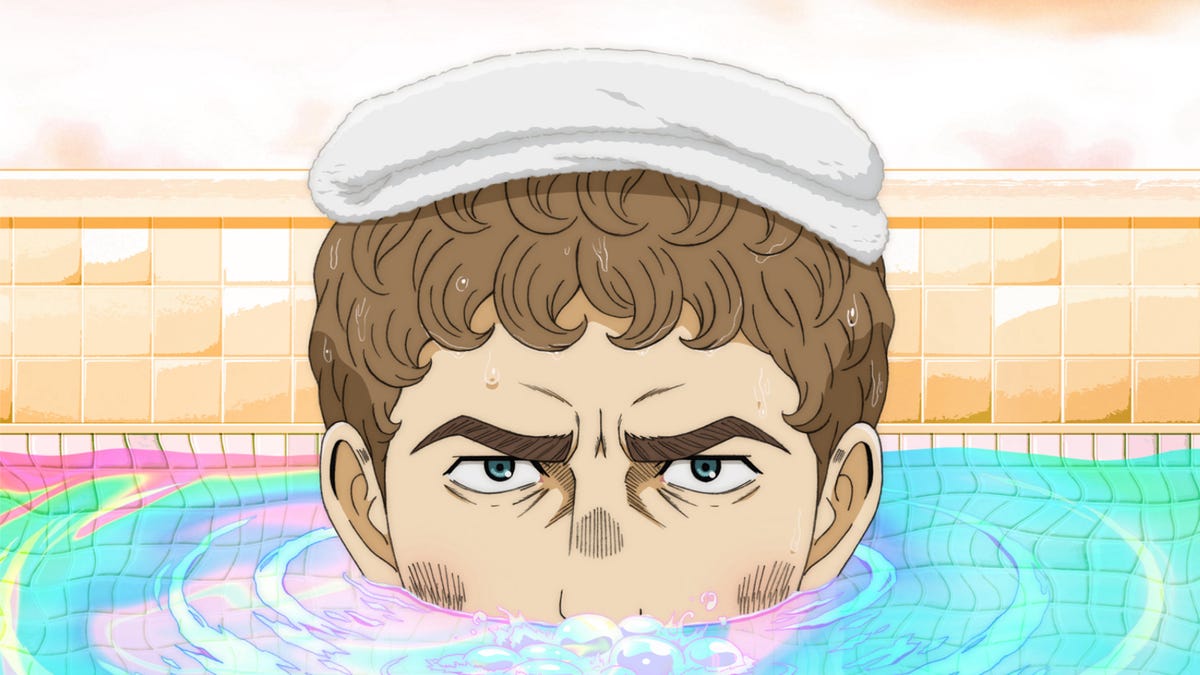
What makes Thermae Romae Novae so wonderful to me, however, is how damned weird it is. Not that the episodes themselves are bizarre, at least once you’ve accepted that Lucius is going to inexplicably get teleported 2,000 years in the future and halfway around the globe each time. What’s bizarre is the premise itself, and how it can be stretched out through 11 distinct episodes about different bath issues. Even despite its time-traveling element, it’s banal.
But this is one of the things that anime and manga do so well, or at least what the media permit to be done—allow creators to make highly specific series that seem to have no broad appeal, and give them a chance to make them broadly appealing on their own. There are series about any kind of sport imaginable, including skydiving (Dive!!). In the Shonen Jump manga anthology, a new manga series has arrived called Akane-Banashi, all about a teenage girl who wants to learn the art of rakugo, which is a centuries-old type of solo performance comedy. The beloved Keep Your Hands Off Eizoken! chronicles a high school club that sets out to make a short anime film. And in The Great Passage, a man strives to become the best possible editor of a new dictionary. I repeat: a dictionary.
But even those series have overarching plots that evolve over time. More purely episodic anime and manga include Bartender, where a man solves his customers’ problems by making them each the perfect cocktail for their unique circumstances. In The Way of the Househusband, an ex-yakuza uses his criminal experience to deal with various household chores and problems. One of the weirdest is Saint Young Men, where Jesus and Buddha share an apartment in modern-day Japan and simply deal with different aspects of modern life. One problem, one chapter or episode.
Advertisement
I’m trying to think of any medium, other than manga and anime, that would be so bold as to commit to a premise as esoteric as this one. There’s vaguely an arc in Thermae Novae Romae in that Lucius’ increasingly clever baths cause him to gain the attention of Emperor Hadrian and his wife Livia’s dissatisfaction that her husband works all the time, but they hardly matter. It’s all about baths—Roman baths, Japanese baths, bath-adjacent problems, bath adjacent solutions. (At one, Lucius is tasked with building a bath that will make the people of the Roman empire accept the next emperor-to-be. He succeeds.)
Although the structure of each episode is always the same, the abundance of creativity in the premise is astounding. As long as you’re willing to place yourself in the middle of the Venn diagram of ancient Rome, modern-day Japan, and bath technology, Thermae Romae Novae is a whimsical, if simple delight. And at only 11 episodes, it doesn’t wear out its welcome.
Advertisement
If you have Netflix, why not give the anime a chance? If not, no worries. After all, it was made for me, not you.
Want more io9 news? Check out when to expect the latest Marvel and Star Wars releases, what’s next for the DC Universe on film and TV, and everything you need to know about House of the Dragon and Lord of the Rings: The Rings of Power.
Advertisement
